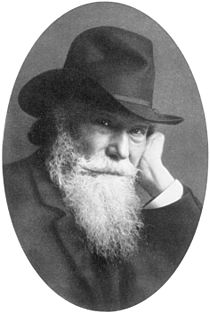Karl Joseph Eberth facts for kids
Quick facts for kids
Karl Joseph Eberth
|
|
|---|---|
 |
|
| Born | 21 September 1835 Würzburg, Germany
|
| Died | 2 December 1926 (aged 91) |
| Alma mater | University of Würzburg |
| Known for | Discovery of the typhoid bacillus |
| Scientific career | |
| Fields | Bacteriology, pathology |
| Doctoral students | Oswald Bumke |
Karl Joseph Eberth (born September 21, 1835, died December 2, 1926) was an important German scientist. He was a pathologist, meaning he studied diseases and how they affect the body. He was also a bacteriologist, which means he studied tiny living things like bacteria. Eberth was born in Würzburg, Germany.
Early Life and Career
Karl Joseph Eberth studied at the University of Würzburg. In 1859, he earned his highest degree, called a doctorate. After that, he worked as an assistant to a famous scientist named Albert von Kölliker. Kölliker was an anatomist, someone who studies the structure of living things.
In 1869, Eberth became a full professor at the University of Zurich. He taught about the study of diseases there. Later, from 1881 until 1911, he was a professor at the University of Halle. He worked there until he retired.
Discovering the Typhoid Germ
One of Karl Eberth's most important discoveries happened in 1880. He found a tiny rod-shaped germ, called a bacillus, that he thought caused typhoid. Typhoid is a serious illness that causes fever and other problems.
Four years later, in 1884, another scientist named Georg Theodor August Gaffky confirmed Eberth's discovery. This meant Eberth was right! The germ was then named after them. People called it "Eberthella typhi" or "Eberth's bacillus." Sometimes it was even called the "Gaffky-Eberth bacillus."
Today, we know this germ by its scientific name: Salmonella enterica subspecies enterica serovar Typhi. It is still known as the cause of typhoid fever.
Other Discoveries
Eberth also described other interesting things he saw under the microscope:
- Eberth's lines: These are tiny lines that appear between the cells of the heart muscle. You can see them when the cells are stained with a special chemical called silver nitrate.
- Eberth's perithelium: This is a thin, incomplete layer of special cells that surrounds the tiny blood vessels called capillaries.
See also
 In Spanish: Karl Joseph Eberth para niños
In Spanish: Karl Joseph Eberth para niños

